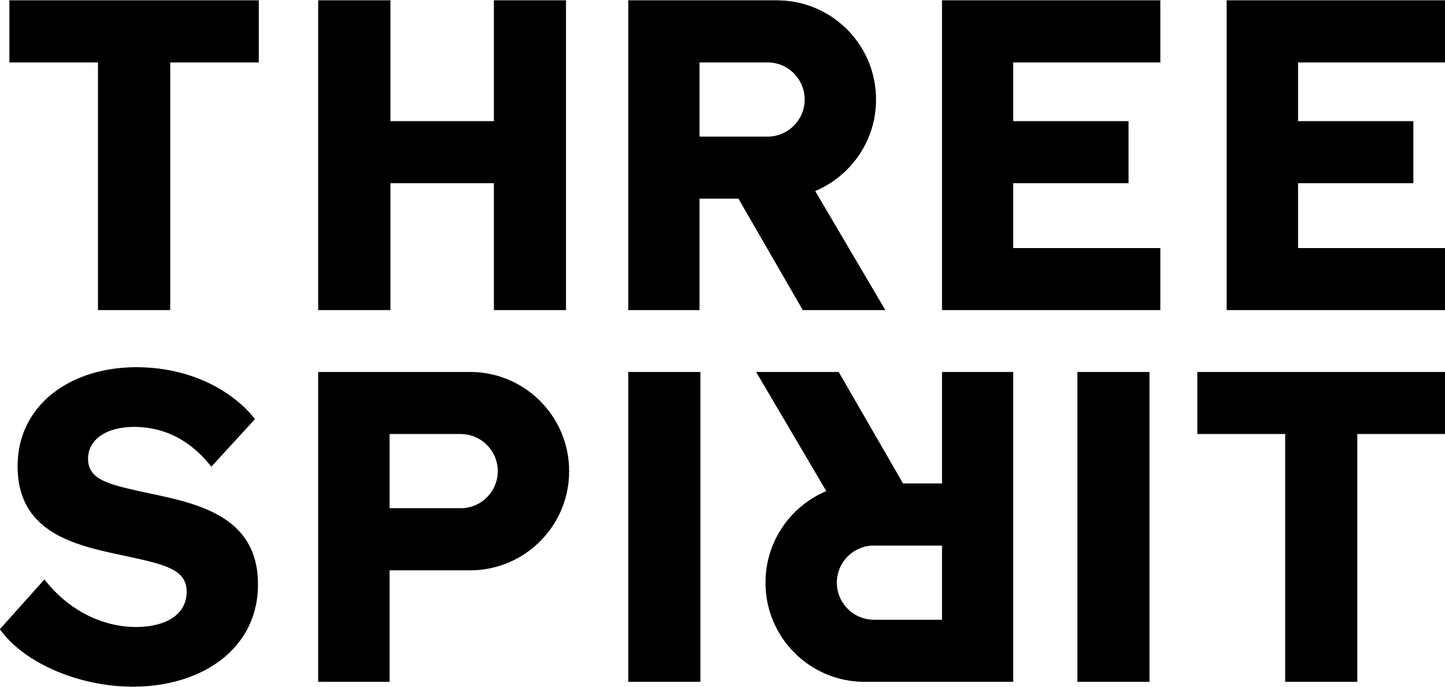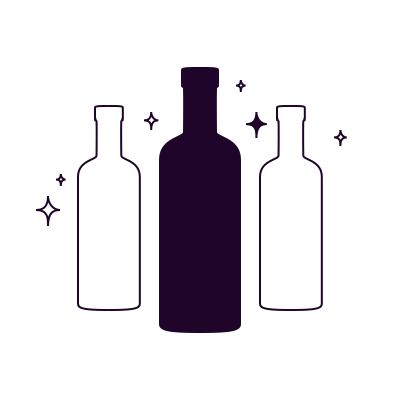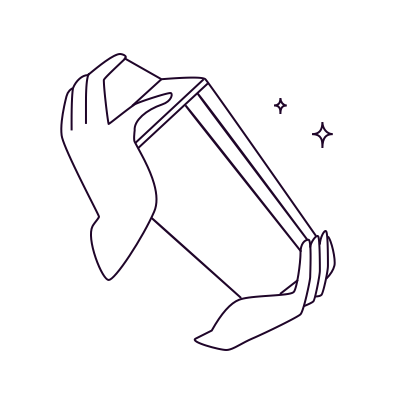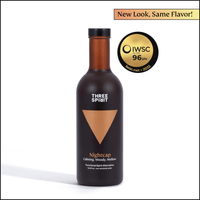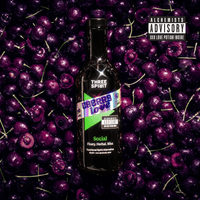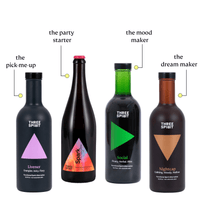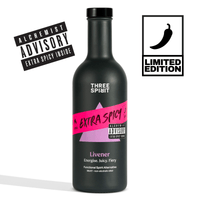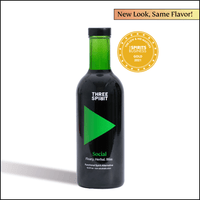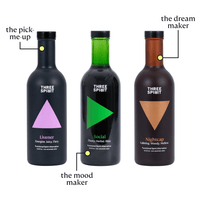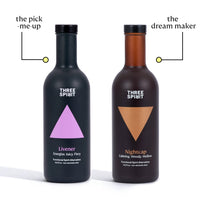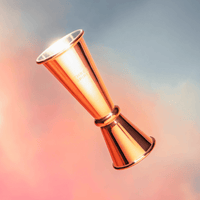Food as medicine: An interview with Patricia Lopez, holistic health coach & healer and founder of The Academy of Healing Nutrition London.
The modern-day medicine woman who is creating holistic balance through food.

We caught up with Patricia Lopez at The Academy of Healing Nutrition to learn more about one of the world’s oldest forms of medicine, Traditional Chinese Medicine (TCM), and mother nature’s power to heal body, mind and soul. If you're a foodie and are curious to learn more about ancient medicinal practices - using food as medicine, meditation, movement, herbs and even needles - then this is the article for you!
Tell us a bit about yourself.
My name is Patricia Lopez, and I am the founder of the London branch of Academy of Healing Nutrition which brings together Eastern wellbeing practices - Traditional Chinese Medicine (TCM), Daoist herbalism, macrobiotics and Ayurveda - alongside modern nutritional science. Through our courses we teach people how to bring more balance and vitality into their own life as well as align their career and passion by setting up wellness businesses of their own.
I was born and raised in Ecuador and came to London via New York through my previous life in advertising. I first came across the Academy and TCM when I was living in NYC. At the time I was suffering from chronic migraines and was experiencing a lot of pain in my body as a result of a major operation that I had when I was 13 for scoliosis. I was completely dependent on prescription painkillers and had to take medicine every day to manage my conditions. So it was this pain that led me to discover my holistic path.
Around 2015, I became very interested in holistic modalities as a path to healing and enrolled with the Academy. In that first year, I tried out many alternative therapies and immersed myself in holistic practices. I stopped taking medication around the same time I graduated from the Academy - a year later - something I never thought would be possible. This journey from chronic pain to wellness led me to be very passionate about natural healing physically, emotionally and spiritually.
The following year, I moved to London to take a job in advertising but quickly realised that was no longer my path. I knew I wanted to give people a platform to learn the concepts that helped me with my healing, so they too could go on to heal themselves and others. I realigned and connected with the Academy founder in the US and so long story short, this is how the Academy of Nutritional Healing in the UK was born.
Today, I still love learning about the different modalities - food, breathwork, meditation, movement etc - and how they all fit together. Day in, day out, healing is my life.

Can you tell us more about TCM?
TCM is a holistic practice that is over 2500 years old, making it one of the most ancient forms of alternative medicine. The practice fundamentally seeks to understand the route cause of disease, pain, discomfort, dysfunction, etc, and to create harmony in the body. It is deeply rooted in the principles of Daoism and the idea that we are all inherently connected to nature, to the world around us and to the entire universe. What connects us all is a life force or energy flow, the Dao.
TCM is a very in-depth system that seeks to cover all angles of wellbeing. There are eight key principles - or ‘limbs’ as they are called - many of which are already popular in Western culture. Meditation - a focus on bringing stillness to every day - and movement through yoga, Tai Chi and less well known - but becoming more popular - Qigong. Then there is the aspect of diet and nutrition that we focus on at Academy (although we touch on several topics beyond food too). There is also bodywork, acupuncture, herbalism and a big focus on cosmology. There is an understanding that ‘as above, so below’ - and if we are all connected, being aware of the changes in the universe are important to understand the impact of those changes here on earth. With that, you look at Feng Shui and astrology.
At the heart of the practice, there is this idea of Qi - or lifeforce - and how we can proactively maintain the flow of Qi and remove any energy stagnations. Alongside the idea of Qi, there is the concept of yin and yang - you will have seen the white and black circular symbol I am sure. Yin is the more feminine energy, associated with the moon, it is creative and inwardly-focused and when we’re talking about yin in food, it can be more cooling like cucumber, mint, watermelon etc. Whereas yang is the masculine energy, associated with the sun, it’s more outwardly expressive and in food, it’s more warming like spicy foods, stimulants (coffee, alcohol) and darker meats. Yin and yang are relative to each other meaning its categorisation is always dependent on what it is being compared to.
So it’s these philosophies of yin and yang which are applied to every element of TCM and again bring us back to the connection with nature - the sun, the moon and ultimately the universe - and this never-ending balance between yin, yang and the flow of life.
Lastly, we always consider the five elements and how they relate to each season. Spring being the wood element, summer being fire, the late summer which is earth, the fall which is metal and winter which is water. All these elements are related to the season, and as the seasons change we are meant to change certain elements of our lifestyle and diet with each transition. Each element is associated with a different bodily organ and each bodily organ needs different coloured and flavoured foods to feel nourished and balanced. This becomes a map to harmonising the body and guiding us through different phases the year and the seasons.
How does TCM differ to Western medicine and are there any similarities?
TCM takes a holistic perspective to conditions by establishing the root cause, whereas Western medicine typically - but not always - focuses on alleviating symptoms. When I experienced my migraines, for example, I was just given prescription medication to manage the pain. Whereas when I uncovered TCM - and the power of food as medicine - I was able to pinpoint the root causes and look at the elements of my conditions holistically. I realised I was living a very yang lifestyle and was very dependent on yang like foods such as coffee, thus creating excess heat in my body that would give rise to the migraines. Through changes to my diet and lifestyle as well as the incorporation of acupuncture and some daily movement, I have been able to come closer to the center.
In Eastern medicine, you’d be looking at a patient as a whole meaning their emotional body - their medical history, diet, lifestyle, stresses, their relationships, their career, as they all impact our wellbeing. For instance, unprocessed emotions can cause stagnation in the body; in TCM unexpressed anger is believed to impact the liver energy. Similarly, if you are not following your life purpose your body can also fall ill from not feeling aligned with your passion and true calling.
The approach is truly holistic, beyond just what goes into a typical western diagnosis - height, weight, body temperature - you’re looking at all the factors, and look to improve the condition through all the different approaches - food, herbalism, acupuncture, meditation and more.
It’s also about understanding that the body has a natural healing mechanism and that all these tools support the body in doing what it does best; healing itself. Sometimes in Western medicine, there is a bit of distrust in the body's ability to heal or just a desire for a quick-fix through pharmaceutical medicines (some of which do have their place).

'Food as medicine', explain?
One of our main beliefs at the Academy is that we can all take charge of our own health. We invite our students to take ownership over their conditions, to learn to nourish themselves and get to the route cause of their imbalances. So when we say ‘food as medicine’, we are simply talking about the beauty of the medicinal properties of food.
Food has incredible power to treat imbalances and to bring back harmony in the body. At Academy, we teach the medicinal properties of food and how to implement this in your everyday cooking but also share over 300 natural remedy recipes using specific foods and herbs.
There are beautiful signatures and signposts that nature offers to understand those medicinal properties. For instance, when you slice a lotus root there are a lot of little holes and it looks very much like the lungs. It’s the same with many beans, they look like the kidney organ. TCM believes that these foods nourish and offer balance to the organs that they resemble. Colours and flavours within different foods can also nourish particular organs. There’s a lot to it and it’s completely fascinating!
Beyond using food medicinally, there is this idea of food energetics: that foods can be cooling, warming, drying, moistening, possess a fast-paced rhythm vs a slow-paced rhythm. Through food energetics, you can start to understand the qualities of food beyond just the nutritional content. Then that means you can start to apply foods based on the condition you are treating, the constitution of the patient and what season we are in. If it’s summer and it’s really hot outside then cooling foods will provide more balance and vice versa.
Different foods have different properties and energetics, and as we understand the context of where we are living and our condition there is an incredible possibility for creating balance and harmony in everyone’s life.
Can you tell us more about the role of herbs in overall health?
Herbalism is certainly a big part of TCM. You can learn this in great depth but at the Academy, we introduce our students to a handful of powerful herbs that they become very intimate with. Herbs are incredibly nutrient and vitamin-rich, and very specifically in TCM, they stimulate the healing mechanisms of the body and bring health benefits to you physically but also psychologically.
The way that we teach herbalism in the Academy is by looking at the Daoist way and the concept of ‘Three Treasures’; Shen which means your spirit, Qi which is your vital energy - which you deplete or nourish by your everyday actions - and then your Jing which is your ancestral lifeforce - what we call ‘trust fund’ - which you inherited from your father and mother. We teach students to understand which herbs nourish which treasure.
Adding herbs to your lifestyle is a key part of what we teach, specifically how to use the herbs in cooking - which is quite a unique approach - and how to use them in really delicious elixirs, using some similar properties to Three Spirit. There are a lot of herbs you can find in a supermarket and we encourage our students to stock up their kitchen with these and use them in cooking - parsley, chives, coriander, as well as Ayurvedic spices like turmeric, cayenne and ginger which we use during the winter months to bring warmth, and then a herb like mint for summer months, which is very cooling.
We also provide our students with tours of London’s Chinatown where you can find some more uncommon herbs and spices, so we look out for reishi which is a powerful medicinal mushroom, astragalus which is great for immunity and schisandra berries which are great for almost everything! Schisandra berries nourish all three of the treasures and are generally used to treat the complexion of the skin. (Conveniently you can find schisandra berries in the fiery and exotic Three Spirit Livener. Say no more…)
There are lots of tonics that we love to make at the Academy but one that is even more applicable now we’re all spending more time online and on Zoom is chrysanthemum flowers which are known for being a very effective eye tonic. Bitter in flavour, this tonic works well on the liver and the lung system, addressing the imbalances that manifest as itchy, puffy, red and tired eyes. Interestingly, one of the tastes in the fire element of summer is bitter so we encourage the use of bitter herbs and foods at this time, so chrysanthemum flowers are a great fit. Also great for summer is matcha and dark cacao; cacao especially is a great heart opener for the summer.

Here’s our recipe for our chrysanthemum tonic, brew all of the ingredients for 15 minutes:
A handful of dried chrysanthemum flowers
A handful of goji berries
Hot water
Add all ingredients in a metal/glass vessel or teapot. Sip it throughout the day for bright, white dazzling eyes.
You mentioned acupuncture as a key principle of TCM, can you tell us more about this practice?
Acupuncture has been practised in TCM for thousands of years and involves the stimulation of different points of the body by inserting very thin needles into specific energy points. These points are determined through the meridian system which comprises 14 major energy channels across the body with over 360 different points on the hands, feet, back, over the major organs alone.
The idea is if you insert the needle into certain points then you help to restore the Qi, move any stagnation, and restore balance. This approach can treat many common conditions - pain, sleep, stress, digestive issues. You don’t treat one ailment in isolation as everything is connected and inevitably an imbalance in one part of the body will impact another part of the body. The overall goal is to improve the flow and the movement of your overall Qi.

What are your top tips for creating healing and nourishing food at home?
One of the silver linings to come out of this great pause is that so many people have been brought back to their kitchens. In TCM, we call the kitchen ‘the heart of the home’ and being disconnected from that is like being disconnected from our heart. The ultimate form of self-care is to be in the kitchen cooking, connecting to the fruits of mother earth, and creating nourishment for your life and the people around you.
At Academy, we teach students how to cook and have a focus on the quality of ingredients we use, so we advise looking very closely as to where they’re spending their food budget. Always looking for the most unprocessed, the freshest and the most high quality - you don’t need to spend loads and some things are worth spending that little bit extra on. We highly recommend you buy organic seasonal fruit and vegetables, as well as ensuring you’re using a good variety of nuts, grains and seeds - as whole grain as possible with as minimal processing and genetic modification - so quinoa, buckwheat, millet, oats, brown basmati. Buy beans in the raw form and soak overnight (soak grains too) in water for digestibility rather than in cans, better for you and cheaper also. When we are looking at cooking ingredients - always read the ingredients, what does it say? If there is anything you don’t recognise then you’re prob best off without it!
At Academy we have a no-dogma approach and we teach students about the good and bad of all the food groups whilst encouraging them to understand their own constitution and what diet works best for them. So if you are talking about animal products, we stress the importance of organic and grass-fed meat, only buying from producers who are looking after the animals properly so typically looking at farmers markets, local farm shops and more independent retailers and butchers. Don’t be afraid to ask your butcher about how the animals are reared, are they having the time outdoors and eating what they are meant to?
At the Academy, we are focused on seasonality and locality. It’s something we are very passionate about - not least because of the reduction of carbon footprint but also it’s very fundamental to nutrition too. There is wisdom in nature, it provides us with the right things at the right times and in the right places, so we feel that eating seasonally, locally-sourced fruit and vegetables is simply honouring nature’s wisdom.
There needs to be a shift here in how we are cooking and what we are cooking season to season. In the summer, there is already that fire from the sun, so you don’t need so much warmth from your food; lightly cooked dishes work better - a stir fry, cooked quickly in a wok for instance - vs in the winter; slow cooking is best - stewing and roasting to bring that warming energy back into the food.
In terms of locality, we live in that global world and there are great things about that for sure. Today, we are used to having bananas all year round but bananas are very cooling, which is great if you are in a tropical climate but not ideal if you are in London in the middle of winter. Like I said there is a reason why certain foods grow in certain places at certain times, and if you follow nature’s natural rhythm then you’re going to be benefiting from a more nourishing diet. The food hasn’t travelled so far, it’s fresh, it doesn’t have to be treated or manipulated. It goes from farm to home. That is the dream - or even better from your garden to home if you are fortunate to have that space.
Are there any new food practices you’ve been experimenting with over lockdown?
I work from home but I really enjoy working from different cafes and having matcha lattes with plant-based milks. Since lockdown I started to more regularly make my own matcha lattes and adding different herbs & adaptogens, like we do in our signature Matcha Beauty Elixir below.
Matcha is great for summer. As I mentioned before, in summer it’s great to have cooling foods and drinks with a bitter taste. This recipe from our curriculum is cooling, detoxifying, and contains ingredients that promote a beautiful complexion.

You combine all the ingredients and let sit for a few minutes for the chia seeds to thicken, then blend :)
Can you tell us a bit about how you keep well during lockdown?
In keeping with my body, mind and soul, there are a few routines that I do in the morning and evening. I aim to change them according to the seasons, my cycle and how I am feeling each day - tuning in to what I need.
Something I always do however is start the day with a glass of warm water, lemon and turmeric, and I do a little Ayurvedic massage for my tummy too. For the past 7 years, I have also made it a priority to do a 20-minute yoga and strengthening exercise routine which has helped me significantly manage my back pain. I couple this with a tapping exercise that helps activate energy channels and organ systems. I sometimes also incorporate a practice called morning pages which is three pages of long-hand journaling, writing down everything that is on my mind or that comes into my head as a form of clearing.
In terms of movement (beyond yoga) I recently discovered Ya’Acov Darling and his Movement Medicine offering which is a bit like a somatic dance, moving freely and dancing with the understanding of the elements - fire, water, earth etc. I have deeply benefitted from connecting to my body in this way.
In the evening I love to wind down by adding lavender oil to the soles of my feet and often combine a practice of meditation and gratitude, which has been helpful of late. I’ll often end the day with Yoga Nidra for sleep.
What's your favourite Three Spirit drink?
I love schisandra berries so it has to be Three Spirit Livener. Schisandra, as I mentioned, nourishes all Three Treasures. I absolutely love the flavour, specifically, I love the kick and the delicious spiciness of the drink. Another ingredient that I love is guayusa leaf. As mentioned I am from Ecuador, and that is one of the plants that grows locally and we were introduced to it at a young age for its energising properties, so I love it that those two are combined in a drink.
What's next for The Academy?
We are currently recruiting for our 2021 in-take starting in March (you can join our online cohort sooner as well), so if you are inspired to learn more and take charge of your own health, sign up on our website to learn more about what we do.

